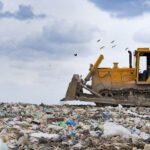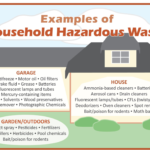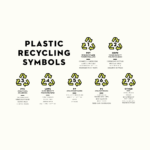What Is a Landfill? How Do Landfills Work?
A landfill is a designated area for waste disposal where trash is isolated from the environment until it is safe to be around. They are carefully designed structures built into or on top of the ground. Here’s a simplified explanation of how landfills work:
Site Selection: Landfills can’t be built just anywhere. They’re typically situated in areas with low groundwater levels and far from sources of drinking water. The chosen site should have stable geological conditions (rocky rather than sandy soil) to minimize the risk of the landfill’s base shifting.
Design and Construction: Modern landfills are designed to minimize environmental impact. A landfill site is lined at the bottom with a protective layer, typically composed of a material like clay, which prevents contaminants from entering the soil. On top of this, there’s a synthetic plastic liner, a drainage layer designed to collect any liquid produced in the landfill, and a protective cover layer.
Waste Disposal: Trucks deliver waste to the landfill, where it’s compacted and spread in layers.
Leachate and Gas Management: As waste decomposes, it produces a liquid called leachate, which can be harmful if it enters the environment. The layers of material at the base of the landfill catch this leachate, which is then collected and treated. Decomposing waste also produces gases like methane, which can be dangerous. Many landfills collect these gases and burn them off, or capture them for use as a renewable energy source.
Covering: At the end of each working day, the deposited waste is covered with a layer of soil or a synthetic material to discourage scavenging animals, minimize odors, and reduce the potential for wind-blown litter.
Closure and Post-Closure Care: When a landfill is full, it’s capped with a final cover system to minimize the infiltration of water and potential release of gases. After closure, the site continues to be monitored and maintained for a period (usually 30 years in the U.S.) to ensure the integrity of the cap, gas management system, and leachate collection system.
Reclaiming Land: After the post-closure period, the land can be used for other purposes, though it typically can’t support heavy structures due to the shifting nature of the waste underneath.
It’s important to note that even with these protections, landfills do have environmental impacts, including potential groundwater contamination, greenhouse gas emissions, and habitat destruction. Thus, efforts to reduce, reuse, and recycle waste continue to be important for sustainable waste management.




